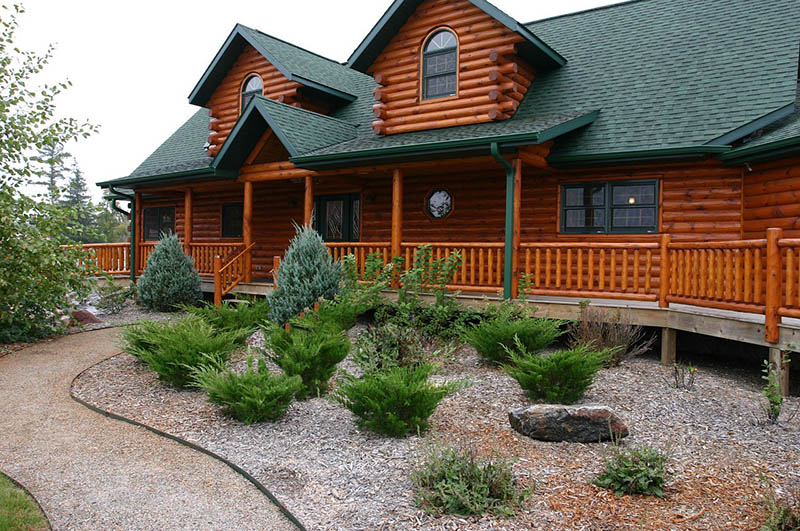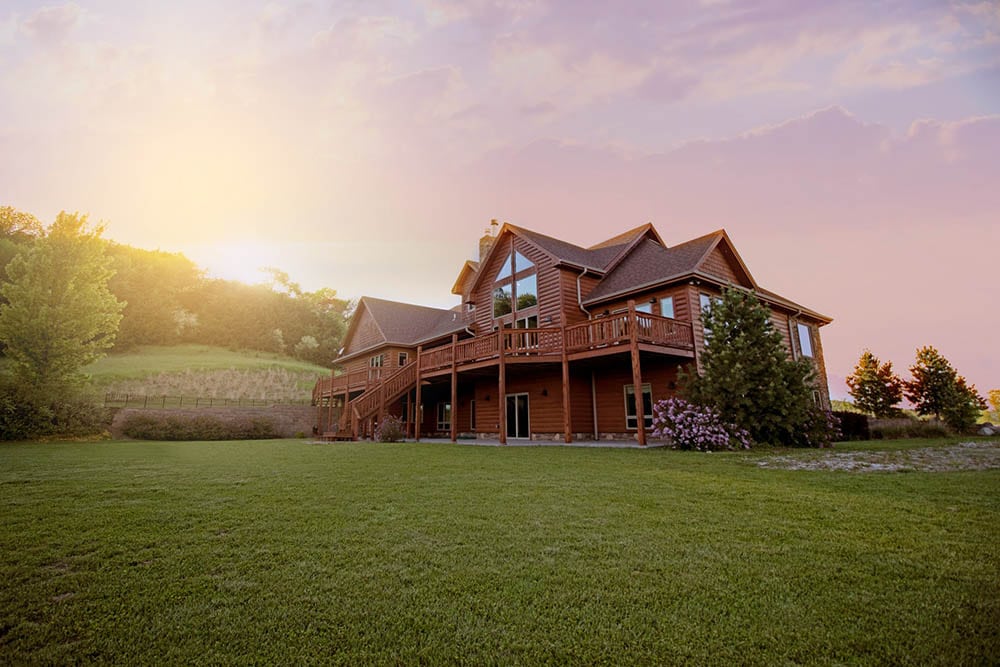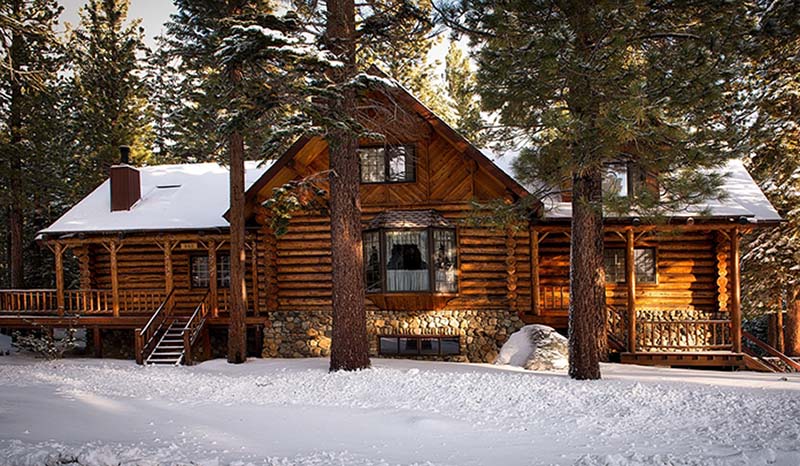Are Log Homes Energy-Efficient? Facts, Tips & FAQs
-
Pete Ortiz
- Last updated:

Solid logs naturally conserve more energy than timber frame walls because they can store heat inside their massive structure. When the night becomes cooler, the log woods release heat back into the room until the temperature finally equalizes. Think of them as “thermal batteries” that store heat and release it gradually when the temperature falls.
Their ability to balance the temperature variation helps maintain a steady temperature inside a room during different times of the day. For this reason, log houses are steadily warmer in the winter and comfortably cool in the summer.1 If you own one of such, you wouldn’t have a reason to complain about high energy costs.
Keep reading as we dig deeper into the energy efficiency of log homes, how they compare against conventional homes, and tips to help you keep your house more energy-efficient. Enjoy the read!
What Is the Energy Efficiency of Log Homes?
If you are considering erecting a log house for your family or for vacation retreat, you might want to know how energy-efficient it will be. Well, we will help address your concerns. Several factors will determine the energy efficiency of your house, including the following:
- The actual building materials
- Framed wall thickness
- Log diameters
- Location
- Size of the structure
The materials used to build a house determine its energy efficiency the most. Log walls insulate six times better than brick walls, 15 times better than concrete walls, and an outstanding 1,700 times better than aluminum walls.
You should note that it would take a 5-foot concrete wall to provide the same insulation as a 4-inch log wood wall because wood is a natural insulator. Each log contains millions of cellulose air pockets that offer homeowners insulation from the elements.
Before using any wood to construct a house, you should air-dry them to minimize expansion and contraction. Also, it would help if you prevented air leakage by reducing the gaps between logs for better energy efficiency.

What Is the R-Value of Wood?
Any material’s thermal or heat resistance is measured by its R-value. As such, different types of wood resist conductive heat flow differently and hence have varying R-values. That’s why you must choose the right wood type for your log house.
Some of the most popular choices for most homeowners include spruce and cedar. But do you know why? Well, you are just about to learn.
Most hardwoods have an estimated R-value of 0.71, whereas softwoods, including spruce and cedar, have an approximate R-value of 1.41. This means a 5-inch softwood log wall has an R-value of slightly above 7. By comparison, a conventional wood stud wall with an R-value of 15 would have more insulation capabilities. But the energy efficiency becomes unmatched if you combine the benefits of a log wall plus its thermal mass benefits.
A log wall cannot satisfy the energy standards of most building codes if we base it on the R-value alone. For this reason, homeowners who want to erect log homes can petition for a building permit under regulations that address the thermal mass and the R-value. While the laws of some states may mandate homeowners to install specific insulation techniques to meet the standard building code requirements, other states have exemptions for log homes.
The Thermal Mass of Log Wood
Research by NAHB found that solid log walls are more energy efficient than conventional walls by 2.5% – 15%. This became possible because of their thermal mass. In other words, solid log homes are more massive than structures insulated with lightweight wood frames.
As we mentioned in our introduction, logs are like “thermal batteries” that store the day’s heat and release it at night. However, it’s important to note that the energy saved by log wood in spring and fall does not amount to much at the end of the year.
Tips for Improving Energy Efficiency in Log Homes
For energy efficiency reasons, there are several factors to consider before erecting a log home, like the topography, the sun’s axis, and wind direction. But also, energy codes can change in an area after several years. That’s why it is essential to boost your home’s energy performance using the following tips:
Obtain an Energy Audit
The first step towards an energy-efficient home is identifying where the most heat loss occurs. The auditing process is known as a thermography scan and is done by a certified Residential Energy Services Network (RESNET) or Home Energy Rating System (HERS) auditor. If you hire their services, they should be able to evaluate your log home’s energy efficiency and pinpoint the areas that need rectification.
These auditors employ several approaches to conduct an energy audit, but the most common is a blower door test. In this case, they attach a powerful fan to the exterior door frame and pull out the air. They can then identify the spaces through which air seeps back into the house.

Treat the Leaks
Most log homes lose energy through leakages. After carrying out the blower door test, it’s essential to seal all leaks through which energy leaks to realize an air-tight performance in your log home.
The sections most prone to leakages are around the door frames, windows, and the attic. It’s wise to check them regularly to ensure the sealants are holding up well. After all, the best way to treat leaks in a log house is to prevent them.
Seal the Ducts
According to the Environmental Protection Agency, an estimated one-fifth of the air from HVAC systems exits through duct leaks. Such duct leaks equally affect energy codes and efficiency, but there’s a simple test to determine whether your system works properly.
Power on the heat and observe the register at the farthest unit of the HVAC. If the forced air doesn’t arrive, it means you have a leakage problem inside the ductwork – you should seal and insulate them as soon as possible. Another strategy that can help you conserve energy in the long term is to protect the foundation of the crawl space and basement stem walls.
Increase Insulation
Because heat rises, it’s common knowledge that much of it is lost via the roof. For this reason, you must prioritize upgrading the roof’s insulation. Log home specialists advise homeowners to invest in insulation up to an R-value of 60. There’s no proof that insulating beyond that point can help save more energy because it is the point of diminishing returns.
However, you must inspect your roof’s building and insulation structure before making any changes. Remove all light bulbs in the ceiling and peek into the roof’s cavity to gain insight. Also, if your house is double-storied, you should check the upper floors erected over an open area, such as a porch.
Replace Old Windows
Although replacing a window can be pretty expensive, it is worth every penny because old windows are well-known culprits that hugely contribute to heat loss.
Over the last two decades, designers and manufacturers have achieved great success with ground-breaking advancements in window-glazing technology. Window units rated by Energy Star can save you up to 15% of energy costs.
When buying a new window for your log home, you should know about U-factors (the measure of heat loss in window units), which are often labeled on window assemblies. The lower the value, the better the performance. According to the National Fenestration Rating Council (FNRC), the U-factor of high-performance double-pane windows does not exceed 0.30. In contrast, some triple-paned windows can achieve a U-factor of 0.15.

Install Energy-Efficient Doors
In terms of energy performance, wooden doors have a solid core that perfectly complements log homes and offers better energy efficiency than hollow steel doors. Although they might cost a fortune, it’s essential to consider them because they enhance the look and feel of your log home. If a wood door is not an option, you should opt for Energy Star-rated fiberglass or metal doors.
Upgrade Your HVAC System
If you recently moved to your new log home, upgrading your HVAC system is a no-brainer. Look for an update that suits your home size and the new area climate. If your old system is too large, you’d be wasting a lot of money for nothing, and if it’s too small, it will waste your time.
More importantly, if you want to keep the inside air cleaner and healthier, you should combine exhaust fans with your new HVAC system.
Conclusion
One of the most common questions is whether log homes are more energy-efficient than conventional homes. After reading this article, it is evident that log wood walls provide better energy performance than other walls since log woods act as solar batteries – they store heat during hot seasons and release it when it becomes cold.
If you are considering building a new log home, some key factors should be kept in mind. First, you should settle on a house orientation that enhances energy conservation. Also, you must ensure the used logs have a high R-value and that no spaces are left between logs. In addition, ensure your house ticks off all the tips outlined in the sections above for improved energy efficiency.
Featured Image Credit: Shon Flaherty, Pixabay
Contents



